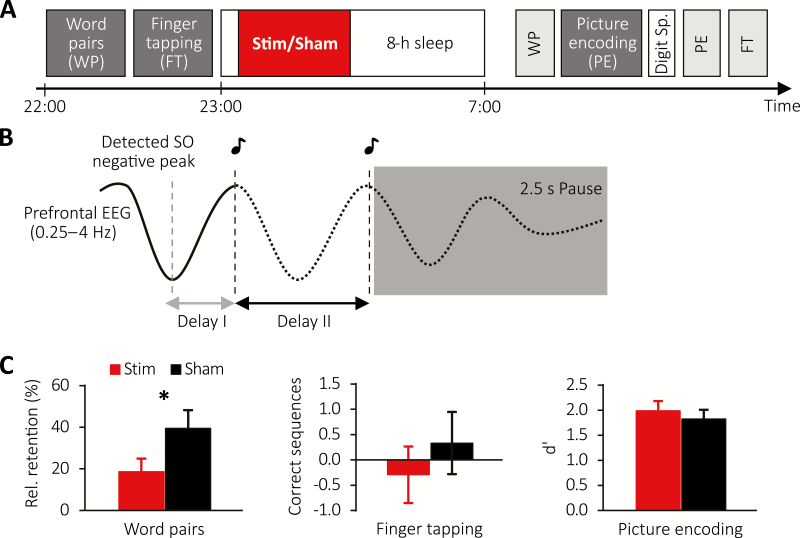Figure 1.
Study design and behavioral results for older population. (A) Subjects learned word pairs (WP) including an immediate cued recall and were then trained on a finger tapping (FT) task. Afterwards subjects were allowed to sleep for 8-h during which (in the first 180 min) auditory closed-loop stimulation (Stim) or no stimulation (Sham) was applied. The next morning, WP memory was tested, followed by a picture encoding (PE) task, for which the encoding and recognition phases were interleaved by a Digit Span Task. Finally, FT performance was tested. (B) Schematic illustrating the stimulation protocol. Upon detection of an SO negative peak, the first and second click were delivered after two individually adapted delays (delays I and II) followed by a stimulation pause of 2.5 s. (C) Mean ± SEM of memory performance on the WP (left), FT (middle), and PE (right) tasks for the Stimulation (red) and Sham condition (black).

